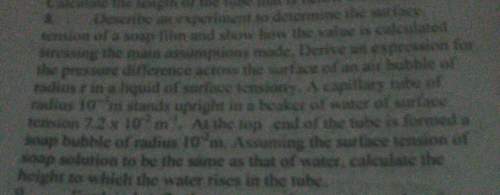
Physics, 11.02.2020 17:14 Destine1965
A typical cell membrane is 8.0 nm thick and has an electrical resistivity of 1.3 107 Ohms · m.
(a) If the potential difference between the inner and outer surfaces of a cell membrane is 80 mV, how much current flows through a square area of membrane 1.2 µm on a side?
A
(b) Suppose the thickness of the membrane is doubled, but the resistivity and potential difference remain the same. Does the current increase or decrease or remain the same?
By what factor?

Answers: 2


Other questions on the subject: Physics

Physics, 22.06.2019 15:00, hailey200127
Holes drilled several kilometers into earth’s crust provide direct evidence about earth’s interior in the form of
Answers: 1

Physics, 22.06.2019 20:30, nae467
Suppose a force of 60 n is required to stretch and hold a spring 0.1 m from its equilibrium position. a. assuming the spring obeys hooke's law, find the spring constant k. b. how much work is required to compress the spring 0.5 m from its equilibrium position? c. how much work is required to stretch the spring 0.6 m from its equilibrium position? d. how much additional work is required to stretch the spring 0.1 m if it has already been stretched 0.1 m from its equilibrium? a. kequals 600
Answers: 2

Physics, 22.06.2019 21:20, aniyahrhs1213
The strong nuclear force acts over a small distance than the electrostatic force. true or false
Answers: 2

Physics, 23.06.2019 02:20, MathWizz5104
Ahole in the ground in the shape of an inverted cone is 14 meters deep and has radius at the top of 11 meters. the cone is filled to the top with sawdust. the density of the sawdust depends upon the depth, x, following the formula ρ ( x ) = 2.5 + 1.2 e − 0.7 x kg/m3. find the total mass of sawdust in the conical hole.
Answers: 1
You know the right answer?
A typical cell membrane is 8.0 nm thick and has an electrical resistivity of 1.3 107 Ohms · m.
Questions in other subjects:


English, 07.12.2020 01:00

Mathematics, 07.12.2020 01:00





Mathematics, 07.12.2020 01:00





